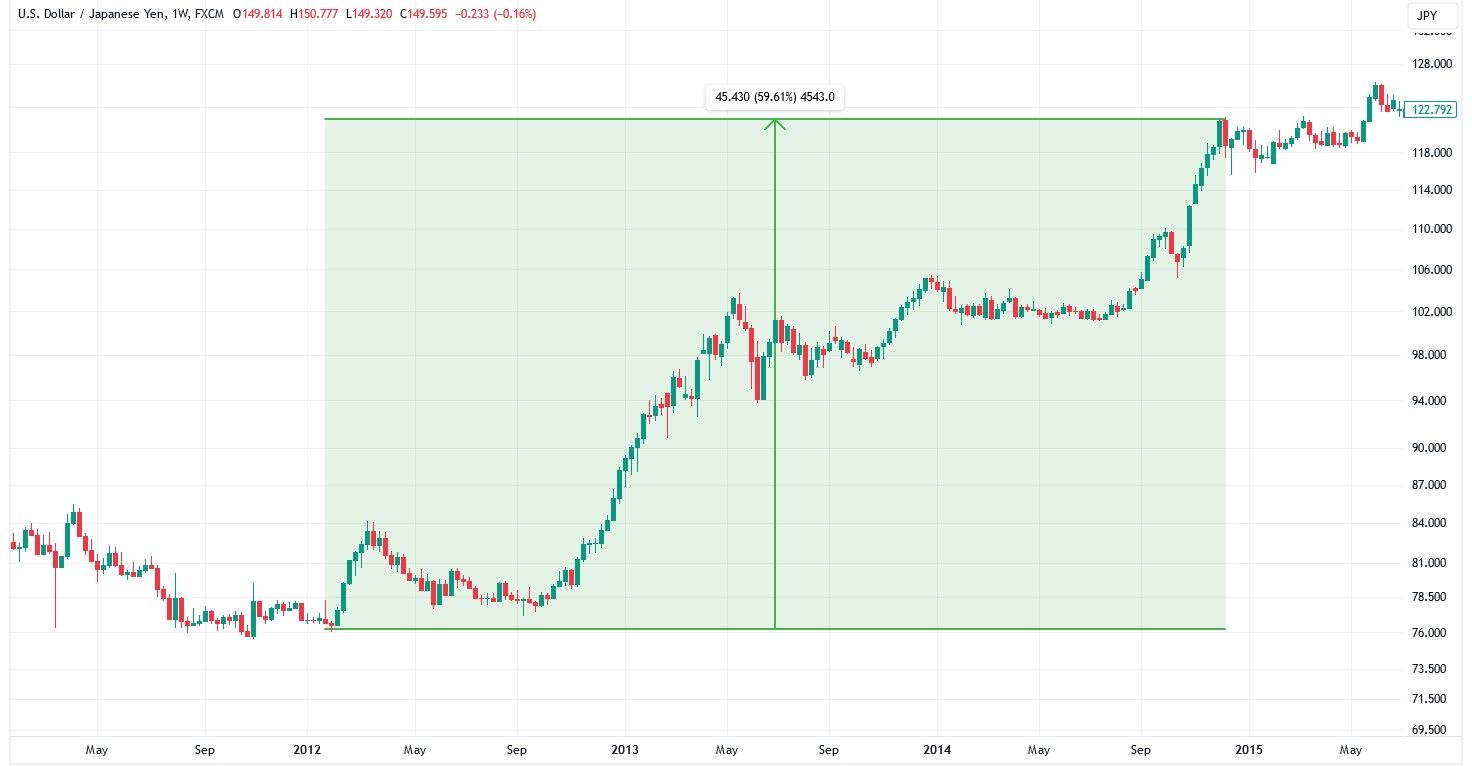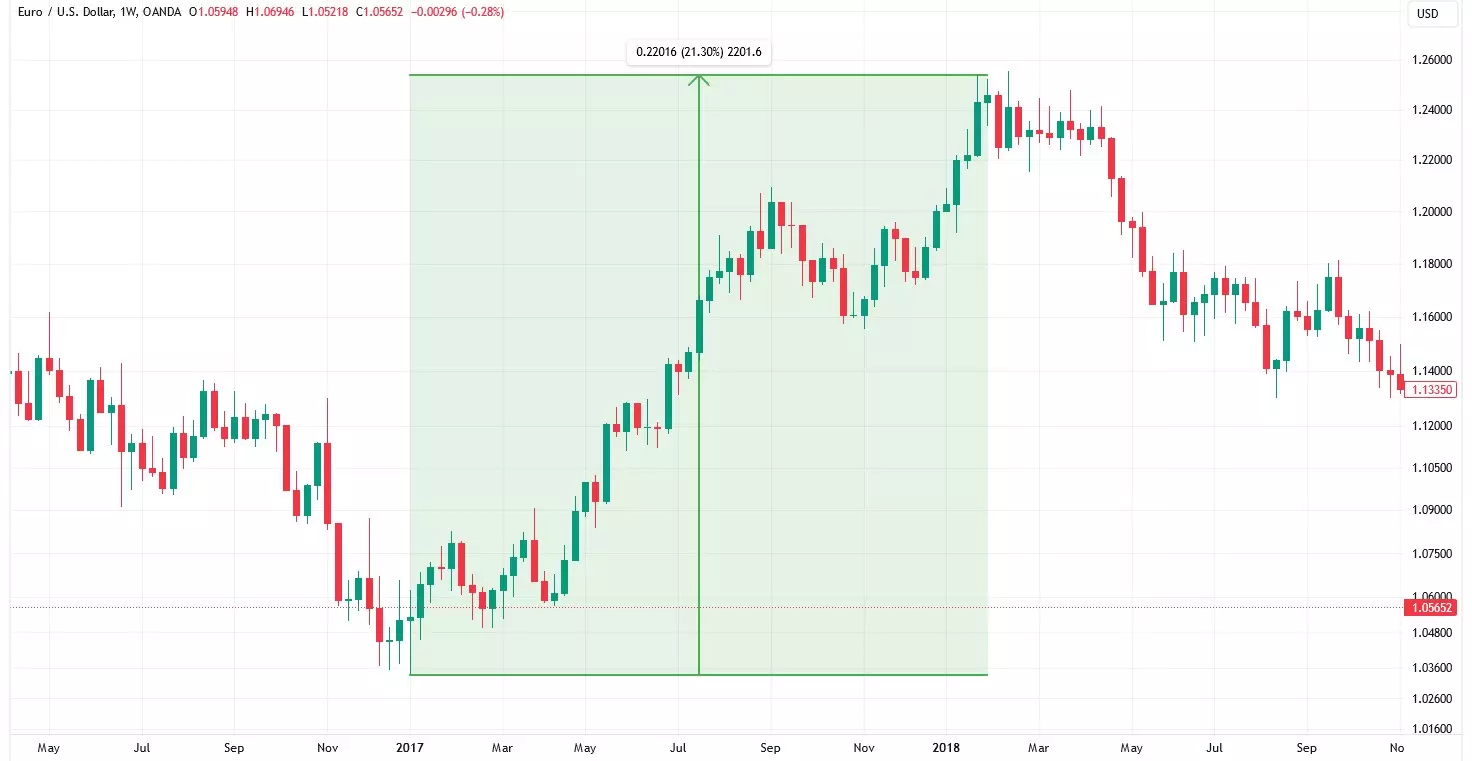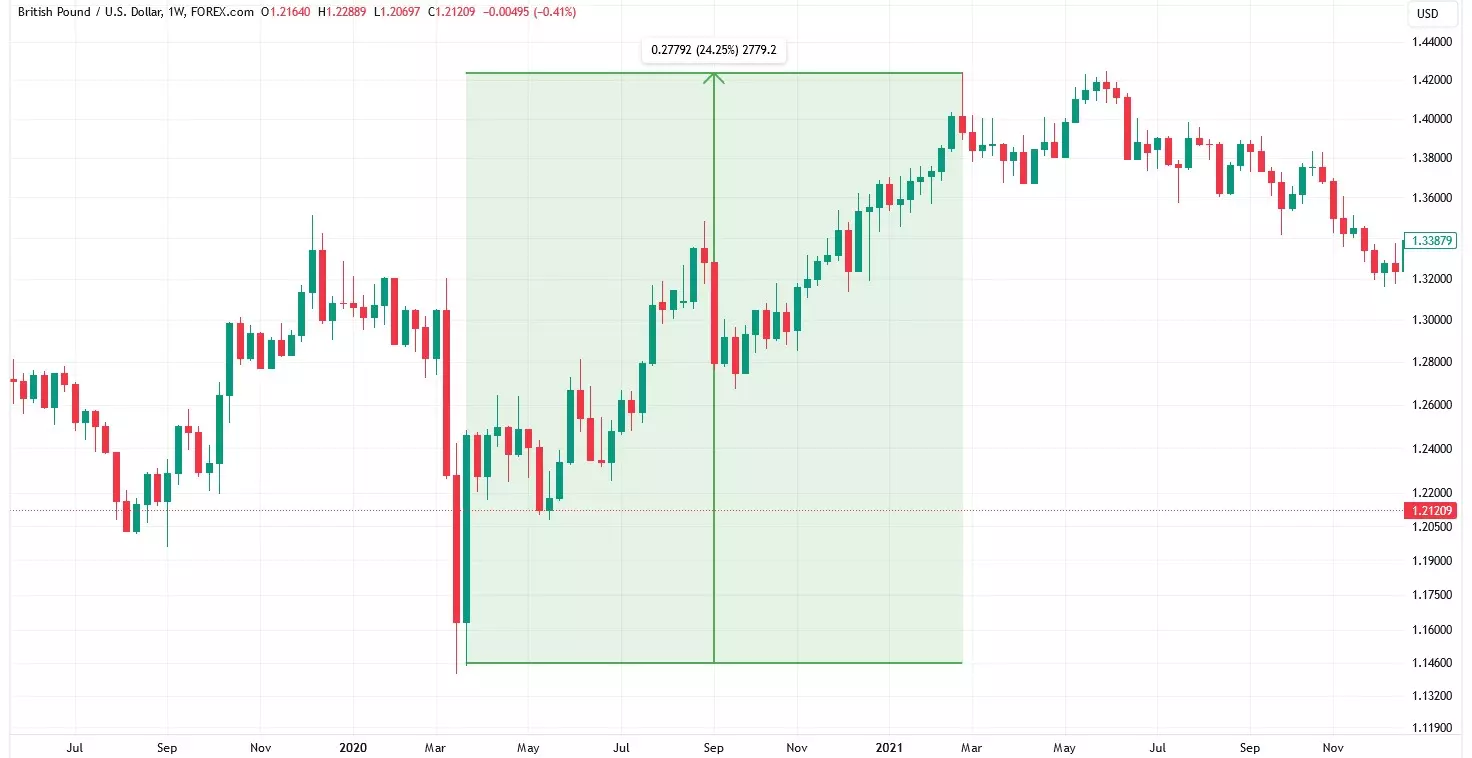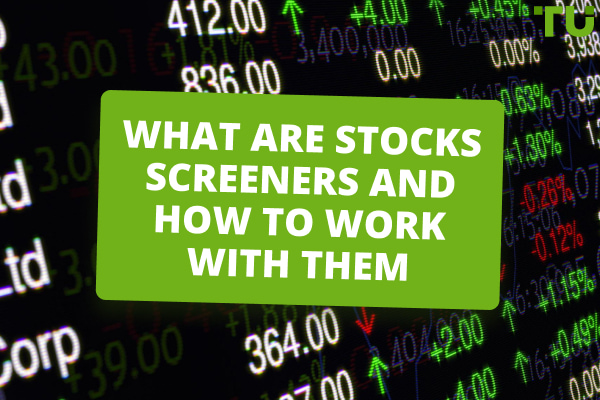How Long Position Works in Forex
A long position in Forex is a trading strategy where an investor buys a currency pair with the expectation that its value will appreciate. The goal is to sell the pair at a higher price, capitalizing on the price difference for a profit. A trader entering a long position is of the impression that the base currency will strengthen against the quote currency.
As it is rightly said that two things never stop – Forex markets and its opportunities. And to capitalize on these opportunities, traders make use of various strategies to profit from market movements. One such strategy is the long position, which the experts will delve into in this article. They will help you understand what a long position means in Forex, and why traders opt for this approach. They will also explore its advantages and disadvantages, as well as the skills needed to successfully open and manage long positions.
What is Forex trading?
The foreign exchange market is a global marketplace where traders engage in the exchange of currencies. With the primary goal of capitalizing on fluctuations in exchange rates between currency pairs, this market boasts an average trading volume of nearly $7.5 trillion. When talking in terms of Forex trading, a 'position' generally refers to a commitment to buy or sell a certain amount of a currency, either today or some time in future. There are two primary types of positions, i.e., long and short.
What is a long position?
In Forex trading or any type of trading for that matter, a long position showcases a positive outlook on the future prospects of a currency pair. When a trader enters a long position, they are essentially of the view that the base currency in the pair will appreciate in value compared to the quote currency. For instance, if you anticipate that the EUR/USD currency pair is going to rise sometime in the near future, you will open a long position by purchasing euros and simultaneously selling an equivalent amount of US dollars. Your ultimate aim would be to sell the euros at a higher price in the future, effectively reaping a profit.
Why do traders open long positions?
There are multiple motivations for traders to open long positions, though most of them are backed by the common expectation of appreciation in currency value. Experts identified the following common reasons behind traders choosing this strategy.
-
Anticipating market upswings - Traders open long positions when they foresee an upward trend in a particular currency pair. This may be based on their analysis of economic indicators, market sentiment, or technical signals. The goal is to profit from the expected currency appreciation
-
Investing in strong economies - Traders often favor long positions when they have confidence in the economic stability and growth prospects of a country. They believe that a robust economy will lead to a stronger currency, making it an attractive long-term investment
-
Interest rate differential - Traders can earn additional income by holding a long position in the base currency where it has a higher interest rate than the quote currency. This is particularly appealing when the interest rate differential is significant
-
Diversification - Opening long positions on various currency pairs allows traders to diversify their portfolios. Diversificatio helps spread risk and reduce the impact of a negative movement in a single currency
-
Hedging strategies - Some traders use long positions as part of hedging strategies. By holding a long position in one currency pair and a short position in another, they aim to offset potential losses and create a balanced risk profile
👍 Advantages of long positions
• Reduced Trading Costs - Holding long positions typically incurs lower trading costs like spreads and commissions as compared to other strategies. This can be cost-effective in the long run
• Flexibility - Traders can hold long positions for various durations, from short-term to long-term. This flexibility allows them to adapt their strategies to different market conditions and trading objectives
• Interest income - Some long positions may synthetically provide interest income, especially when the base currency has a higher interest rate compared to the quote currency. This additional income can complement your trading gains
👎 Disadvantages of long positions
• Economic events - Unexpected economic events, such as political turmoil, natural disasters, or economic crises, can have a significant impact on currency values. Long positions can be vulnerable to these sudden events
• Holding costs - Certain long positions may incur holding costs when the base currency has a lower interest rate than the quote currency. This expense could impact your overall profits
• Market volatility - Forex markets can be highly volatile, with currency prices subject to rapid and unpredictable fluctuations. Traders must be prepared for significant price swings, which can affect long positions
When to open a long position
The decision of when to open a long position requires vital insights from the following factors:
Fundamental Analysis
Fundamental analysis is a crucial tool in determining when to open a long position. This approach involves scrutinizing economic factors that could drive a currency pair to appreciate. Key elements to consider include economic performance, political stability, and interest rates in the base currency. A favorable fundamental analysis could signal the right time to take a long position.
Technical Analysis
Traders relying on technical analysis examine historical price charts and indicators to predict future price movements. When looking to open a long position, they search for chart patterns or indicators that suggest a currency pair is about to embark on an upward trend. These signals provide essential guidance for entering a long position at an opportune moment.
Risk Management
It is important to assess your risk tolerance and the reward-to-risk ratio before you enter a long position. While the prospects of a long position can be enticing, a well-thought-out risk management strategy is crucial to protect your capital. This involves considering the extent to which you are willing to risk capital in exchange for potential rewards. Traders should employ risk management tools like stop-loss and limit orders and pay close attention to their position sizing.
How to manage long positions
Managing long positions requires a well-rounded approach, utilizing a combination of strategies to navigate the unpredictable Forex market. Experts suggest using the following tools and strategies:
Stop-loss orders
A stop-loss order is a fundamental tool for managing risk. Placed at a predetermined level, it automatically closes your long position if the market moves unfavourably. This limits potential losses and provides a safety net when market conditions turn against your position.
Take-profit orders
Take-profit orders are a counterpart to stop-loss orders. They serve to lock in profits when the market moves in your favor. By setting a specific price level at which your position will be automatically closed, you ensure that profits are captured rather than surrendered when the market reverses.
Position sizing
An essential component of risk management, position sizing dictates the percentage of your trading capital at risk in a single trade. When opening long positions, it is prudent to risk only a small fraction of your overall capital. This helps prevent significant losses, ensuring that you can continue to trade even when individual positions do not perform as anticipated.
Hedging
Hedging is a risk management technique where traders use other positions to offset the risk associated with their long position. It involves opening additional positions in the opposite direction, effectively balancing your exposure. Hedging can be a valuable tool in protecting your capital in a highly volatile market.
Best Forex brokers


Examples of successful long positions in Forex
USD/JPY (2012-2015)

The USD/JPY currency pair witnessed remarkable growth during this period and appreciated by nearly 61%. This significant uptrend was primarily driven by the weakening of the Japanese yen against the US dollar. Japan's central bank implemented various monetary policies aimed at stimulating the economy. This action resulted in a devaluation of the yen. Traders who recognized this trend and opened long positions in USD/JPY experienced significant profits.
EUR/USD (2017-2018)

The EUR/USD currency pair experienced a notable gain in this period, appreciating by more than 20%. The primary factor behind this rise was the strengthening of the European economy during this period. Positive economic indicators, improved investor confidence, and sound monetary policies in the Eurozone contributed to the euro's appreciation against the US dollar. Traders who held significant long positions in EUR/USD benefited from this upward movement.
GBP/USD (2020-2021)

Amid the challenging times of the COVID-19 pandemic, the GBP/USD currency pair showed resilience, surging by over 20% between 2020 and 2021. This remarkable growth was fueled by the UK economy's recovery efforts. As the UK government implemented various fiscal and monetary measures to support the economy, the British pound gained strength against the US dollar. Traders who had the foresight to open long positions in GBP/USD during this period reaped substantial profits.
Tips for successful Forex trading
As you venture into the world of Forex trading, it's essential to keep the following tips in mind:
Do your research
Understanding the factors that influence currency prices is fundamental. Take the time to research and comprehend how economic, political, and social events impact the Forex market. Learn to use both technical and fundamental analysis to identify promising trading opportunities.
Use risk management techniques
Limiting your losses is paramount in Forex trading. Implement risk management techniques such as stop-loss orders, take-profit orders, and appropriate position sizing to safeguard your capital. Never risk more than you can comfortably afford to lose and diversify your positions wisely.
Be patient
Forex trading is a long-term endeavour. While the allure of quick riches can be tempting, it's crucial to maintain patience. Successful Forex traders understand that consistent and prudent trading is the key to sustainable profits.
Start with a demo account
Before risking your capital, test your trading set-up on a demo account. This will enable you to identify the pitfalls of your strategy beforehand. It’s better to make mistakes on a demo account, sharpen your strategy, and then risk your capital in the Forex market.
Summary
A long position is generally opened to capitalize on one’s positive outlook on future asset prices. For beginners, it is important to understand the intricacies of the market and exercise caution while trading. It is also important to manage your risks effectively in order to make any strategy sustainable and consistent. By following the guidelines and insights presented in this article, you are better equipped to navigate the complex world of Forex trading. Lastly, note that entering a long position can be a double-edged sword where you can experience significant gains, but at the same time it can erode those gains quickly if not approached with proper risk management.
FAQs
What motivates traders to open long positions in the Forex market?
Traders open long positions in the Forex market when they anticipate that a currency pair's value will appreciate, aiming to profit from the price increase. Positive economic indicators, interest rate differentials, or technical analysis may drive this expectation.
What are some common misconceptions about long positions in Forex trading?
Common misconceptions about long positions in Forex trading include the belief that they guarantee profits and ignoring the importance of risk management. Traders should understand that long positions come with risks and require careful strategies.
Are long positions in Forex more suitable for certain currency pairs or trading sessions?
Long positions in Forex can be more suitable for currency pairs with strong bullish trends or during trading sessions when market sentiment is generally optimistic, such as the European or U.S. sessions. Traders often assess market conditions and currency pair behavior to determine the appropriateness of long positions.
What should I do if a long position doesn't perform as expected?
If a long position in Forex underperforms, consider setting a stop-loss order to limit potential losses and reassess your trading strategy. Maintaining a clear risk management plan is crucial for handling unexpected market movements.
Glossary for novice traders
-
1
Broker
A broker is a legal entity or individual that performs as an intermediary when making trades in the financial markets. Private investors cannot trade without a broker, since only brokers can execute trades on the exchanges.
-
2
Long position
A long position in Forex, represents a positive outlook on the future value of a currency pair. When a trader assumes a long position, they are essentially placing a bet that the base currency in the pair will appreciate in value compared to the quote currency.
-
3
Trading
Trading involves the act of buying and selling financial assets like stocks, currencies, or commodities with the intention of profiting from market price fluctuations. Traders employ various strategies, analysis techniques, and risk management practices to make informed decisions and optimize their chances of success in the financial markets.
-
4
Forex Trading
Forex trading, short for foreign exchange trading, is the practice of buying and selling currencies in the global foreign exchange market with the aim of profiting from fluctuations in exchange rates. Traders speculate on whether one currency will rise or fall in value relative to another currency and make trading decisions accordingly.
-
5
Risk Management
Risk management is a risk management model that involves controlling potential losses while maximizing profits. The main risk management tools are stop loss, take profit, calculation of position volume taking into account leverage and pip value.
Team that worked on the article
Chinmay Soni is a financial analyst with more than 5 years of experience in working with stocks, Forex, derivatives, and other assets. As a founder of a boutique research firm and an active researcher, he covers various industries and fields, providing insights backed by statistical data. He is also an educator in the field of finance and technology.
As an author for Traders Union, he contributes his deep analytical insights on various topics, taking into account various aspects.
Dr. BJ Johnson is a PhD in English Language and an editor with over 15 years of experience. He earned his degree in English Language in the U.S and the UK. In 2020, Dr. Johnson joined the Traders Union team. Since then, he has created over 100 exclusive articles and edited over 300 articles of other authors.
Mirjan Hipolito is a journalist and news editor at Traders Union. She is an expert crypto writer with five years of experience in the financial markets. Her specialties are daily market news, price predictions, and Initial Coin Offerings (ICO).









